by Elsa Johnson
It’s not just our trees that are dying but trees everywhere, headlines an article in The Guardian (issue of 19 September 2016, written by Oliver Milman in Oahu and Alan Yuhas in San Francisco).
In Hawaii, on the big island, in 2010, the iconic ohi’a trees – a rainforest evergreen — started dying at an astonishing rate. After almost six years nearly 50,000 acres of native forest on the big island are infected, and there is the potential for major deforestation to a whole family of metrosideros trees and shrubs of the Pacific. It is caused by a beetle carrying a pathogen (dark creeping shades of Moana!).
In other areas of the tropics, disease threatens banana plantations, coffee growers are dealing with fungal attacks that reduce yield and kill the plants that produce the coffee bean, and citrus greening is a threat to citrus growers worldwide.
In California an invasive pathogen called Sudden Oak Death – distantly related to the cause of the 19th century Irish potato famine – is infecting hundreds of different plants, including redwoods and ferns (but …but…it’s called oak death): 66 million trees have been killed in the Sierra Nevada alone. SOD is caused by phytophthora ramorum. Despite its name the pathogen slowly saps the life from oaks over two to five years. It is spread mostly through water, like rain splashing off an infected leaf, or wind driven rain that can carry the pathogen for miles. Whole mountainsides have died.
In the Midwest, from Texas to Minnesota and east into Ohio, trees are dying. Ashes succumb to ash borer, oaks succumb to oak wilt (as we know to our regret through the loss of old growth red oaks in Forest Hill Park), caused by the fungus Ceratocystic fagacearum, and to opportunistic insects like the Two-lined Chestnut Beetle. And now something is affecting our native beeches. Meanwhile In the Pacific northwest, bark beetles and pine beetles are killing trees. Five years of drought starved trees of water and weakened their defenses. The beetles that used to be held in check by wet winters now have more time to roam beyond their normal territories, expanding from British Columbia to the Yukon border. Meanwhile, across the Atlantic, the iconic English and European beech forests are also threatened by climate change, especially drought. For us here, weather – mild winters possibly? – may not kill off the two lined chestnut borers the way a bitterly cold winter would, hastening their spread.
What seem like small changes to us – the shift of a degree or two, the lengthening of fall and the earlier spring onset of spring by a just few weeks (which feels beneficial to us – who doesn’t appreciate a milder winter around here?) — can have profound negative cascading affects to ecosystems which depend for communal health on everything living in a balanced equilibrium of competing and cooperating interconnected organisms, both above and below ground. Events like a long and too-wet spring, followed by a longish period of drought, such as we had here in northeast Ohio last year, which affected the prairie states even more severely, stress trees, leaving them vulnerable. They live lives many times longer than ours, but are slow to adapt.
Alas.
These changes to climate – that seem so unremarkable to us, or even good as we enjoy that mild winter day – naturally affect all components of an ecosystem, and there are parameters beyond which any ecosystem becomes destabilized and the natural equilibrium of the healthy ecosystem is sent awry. I believe we laypeople inadequately appreciate this. Probably new equilibriums will be established over an extended time, but we, personally, probably will not live to see it. Recent reports suggest as much as 80% of species may be on a path to extinction…. and we? We are who understand – we who care? Galadriels, sadly looking at the world we love, knowing that much in it that is wonderful will pass away.
This is what tree death looks like.
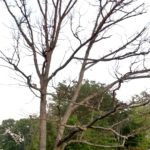
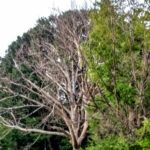
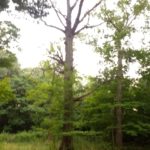
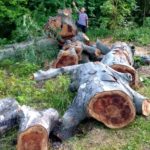
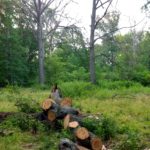
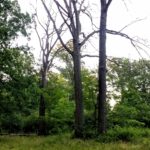
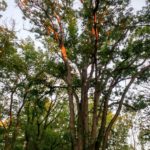
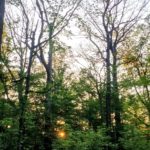
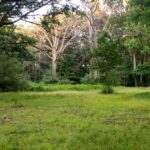
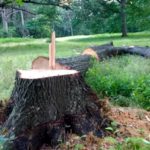
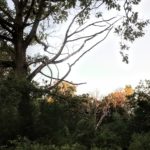
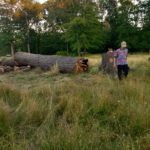
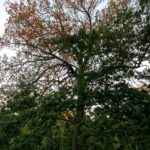
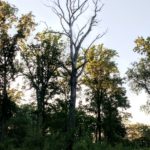
Twenty years ago the pine bark beetle marched across the American Southwest, devastating all of northern New Mexico, my family home, as well as other places (northern Arizona, southern Colorado,etc), and in addition leaving behind a tinder box that began exploding in wildfires. Recall the American chestnut’s fate, and the American elm. Disease, invaders (like the beetle), and climate change are wreaking havoc. We can try to stop the first two, but only the third is truthfully actionable for humans. We must fight for our trees; never stop.
thank you for your comment